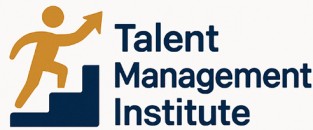
Understanding the Purpose of 360 Reviews
Setting the Stage for Comprehensive Employee Insights
360 reviews are a pivotal component in the landscape of talent management, serving as a powerful tool to gather feedback from a well-rounded perspective. This multi-dimensional feedback mechanism taps into insights not just from the manager but also from peers, direct reports, and even the individuals themselves. By doing so, it provides a holistic view of an employee's performance and behaviors within the team and organization. Understanding the purpose of 360 reviews is essential for crafting effective feedback questions that yield actionable insights. The ultimate goal of these reviews is twofold: enhancing employee engagement and driving continuous development. When aligned with well-articulated goals, a 360 review acts as a guide for employee performance and personal growth. Cultivating a robust feedback culture within teams transforms open-ended questions into powerful tools that shed light on both strengths and areas for improvement. The feedback provided in a 360-degree survey can help decode complex interpersonal dynamics, ultimately fostering a healthier work environment. For organizations aiming to optimize their 360 feedback process, it is essential to design questions that reflect the diverse roles and levels within their structure. An effective approach requires understanding common challenges associated with different employee types, ensuring the feedback aligns with organizational growth strategies.Key Elements of Effective 360 Review Questions
Crafting Questions That Drive Insightful Feedback
When designing 360 review questions, it's crucial to focus on crafting queries that elicit meaningful and actionable feedback. Effective questions should not only assess employee performance but also enhance the overall development of the individual and the team. Here are some key elements to consider:
- Clarity and Precision: Ensure that each question is clear and specific. Ambiguous questions can lead to confusion and unreliable responses. For instance, instead of asking "How does the employee perform?", consider "How effectively does the employee meet their project deadlines?"
- Balanced Focus: Include a mix of questions that cover various aspects of performance, such as problem-solving skills, teamwork, and leadership abilities. This balanced approach provides a comprehensive view of the employee's capabilities.
- Open-Ended Questions: Incorporate open-ended questions to allow for detailed responses. Questions like "What are the employee's strengths and areas for improvement?" encourage thoughtful feedback and provide deeper insights.
- Relevance to Roles: Tailor questions to align with the specific roles and responsibilities of the individual being reviewed. This ensures that the feedback is relevant and applicable to their work context.
- Consistency Across Reviews: While customization is important, maintaining a core set of questions across reviews helps in comparing performance over time and identifying trends.
Utilizing a well-structured survey template can help streamline the process and ensure consistency. By focusing on these elements, organizations can enhance the quality of their 360 reviews, ultimately leading to more effective performance management and employee development.
Common Pitfalls in Designing 360 Review Questions
Identifying Common Mistakes in Crafting Review Queries
Designing feedback questions for 360 reviews allows for comprehensive insights into employee performance and their work. However, without careful attention, these questions may fail to deliver the intended value. Here are some frequent pitfalls to avoid:
- Using Vague Questions: Questions lacking clarity make it difficult to obtain useful feedback. Instead, questions should be specific and context-driven to yield more precise insights.
- Overloading with Too Many Questions: A lengthy feedback survey can lead to fatigue, reducing both the employee experience and the quality of responses. Keeping surveys concise ensures meaningful and engaged answers.
- Ignoring Role-Specific Needs: Questions that do not account for the particularities of a role may not accurately capture an individual's performance. Tailor questions to fit different roles and levels for more relevant evaluation.
- Neglecting Open-Ended Formats: While open-ended questions require more time, they provide nuanced insights into how a person collaborates with team members and manages goals.
- Providing Insufficient Guidance: Without a robust template or guidelines, team members may struggle to offer constructive observations. Offering clear instructions within surveys can help them deliver more insightful feedback.
When conducting degree feedback, it is critical to understand these best practices to maximize the effectiveness of the process. Learn about how to enhance employee engagement through careful crafting of questions.
Tailoring Questions to Different Roles and Levels
Aligning Review Questions with Employee Roles
Crafting 360 feedback questions requires a strategic approach that considers the diverse roles and levels within an organization. The questions should be tailored to align with individual and team goals, providing meaningful insights into employee performance.Differentiating Questions Based on Position
- Management Level: When addressing managers, include questions that focus on leadership skills, team management, and strategic vision. Feedback questions for this group could explore their ability to motivate and develop team members.
- Team Members: For non-management employees, questions should assess their collaboration within the team, problem-solving abilities, and contribution to team objectives.
- Individual Contributors: Their performance review should reflect their personal work achievements, adaptability, and growth in their respective roles.
Consideration for Organization Hierarchy
Open-ended questions should be strategically used, varying in complexity based on the hierarchy within the organization. Direct reports might need questions that help managers understand their direct impact on the team's performance.Best Practices in Tailoring Reviews
- Open-Ended Questions: Encourage comprehensive feedback by incorporating open ended questions that allow employees to elaborate on their experiences and observations.
- Survey Templates: Use a standardized survey template, allowing flexibility to customize questions according to different roles. This consistency helps in collecting comparable data across different departments.
Using Feedback for Development
Use degree feedback to support continuous development. Constructive feedback gathered through reviews can significantly help in shaping talent development plans by identifying areas that need improvement. Taking into account the individualized nature of each role while creating review questions ensures that the feedback is relevant and provides a clearer picture of employee engagement and performance.Integrating 360 Feedback into Talent Development Plans
Incorporating Feedback into Talent Development Strategies
Integrating the insights gathered from 360 feedback into talent development plans is essential for fostering employee growth and enhancing overall performance management. Here are some best practices to consider while making feedback a pivotal part of employee development:- Align Feedback with Development Goals: Ensure that the feedback obtained from the review questions is closely linked with the employee's personal and professional goals. Such alignment helps in setting clear objectives that drive performance improvements and encourage team members to focus on specific areas of growth.
- Create a Personalized Development Plan: Tailor the development strategy to suit the individual strengths and areas of improvement identified through feedback survey results. A well-designed plan can offer constructive feedback, guiding employees towards achieving their goals, while also addressing the feedback questions raised during the review.
- Provide Ongoing Support and Resources: Facilitate managers and leaders in providing continuous support, resources, and training opportunities. This helps employees to work on their development areas, enhancing employee engagement and ensuring that they can contribute effectively to their team.
- Utilize Open-Ended and Direct Feedback: Encouraging the inclusion of open-ended questions in the feedback survey helps in acquiring in-depth insights into an employee’s performance. Such questions can provide clearer perspectives for manager and direct reports, aiding in problem-solving and employee performance enhancement.
- Monitor Progress Regularly: Establish a system for regular performance reviews to monitor the progress of employees against their development plans. This continuous monitoring ensures that the feedback is being utilized effectively and the degree feedback approach is bringing desired changes within the team.
- Document and Share Success Stories: Sharing success stories of employees who have significantly improved their performance through feedback implementation can motivate others. Providing examples of how individuals benefited from feedback surveys and development plans can improve the overall employee experience.
Evaluating the Impact of 360 Reviews on Organizational Growth
Assessing the Organizational Growth Post-360 Reviews
Evaluating the impact of 360-degree feedback involves examining several facets of an organization, from individual performance improvements to overall cultural shifts. To truly gauge the effectiveness of 360 reviews, organizations should consider the following key areas:- Individual Growth and Development: Analyzing changes in employee performance and engagement is crucial. Notice whether employees are meeting their goals more effectively and if they’ve developed new problem-solving skills. Similarly, observe how well individual feedback has translated into personal growth.
- Team Dynamics and Performance: An evaluation on how feedback has influenced team cohesiveness is important. Assess if team members are collaborating better, leading to enhanced work output. Understanding the role open-ended questions play in fostering team dialogues can provide valuable insights.
- Managerial Effectiveness: Determine if the feedback has aided managers in supporting their direct reports more effectively. Review if managers are utilizing feedback to customize development plans tailored to their team's needs better.
- Performance Management Systems: Scrutinize how well the 360-degree feedback has been integrated into the existing performance review systems. This integration helps ensure that best practices are maintained, and performance reviews are more comprehensive and fair.
- Organizational Culture: Consider whether there has been a shift towards a more feedback-friendly culture. This can be reflected by how often employees now seek and provide feedback, promoting a culture of continuous improvement.













